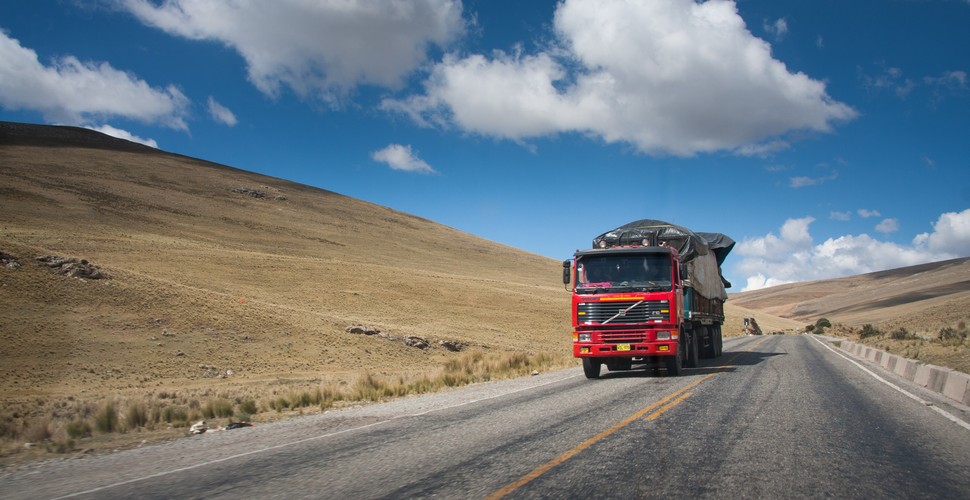
Traveling Peru by Car
Written by:Valencia Travel
Last Update: 2025-02-25
From the bustling capital city of Lima and the expansive deserts to the jungle and high mountain passes in the Andes, Peru has one of the world’s most unique terrains to travel through. While buses zip through from point A to B, rental cars give travelers the best chance to see every inch of Peru’s beautiful landscape, and the freedom to stop wherever they like. For those travelers looking to travel in Peru by car, here is some useful information!
Sacred Valley Road
Traveling Peru by Car
Vicuña Sign in The Colca Canyon
Driving Requirements
It's mandatory in Peru that you are over 18 years of age to drive a vehicle and carry with you proof of your car insurance; a minimum of third-party insurance is required (SOAT). You will need to have your valid driver's license from home, along with your International Driving Permit. Don't forget to have your valid passport with you at all times.
A driver’s license from your own home country is sufficient for renting a car. An IDP is only required if you’ll be driving in Peru for more than 30 days or are planning to drive frequently in the country. The IDP is valid for one year, negating the need for a Peruvian driver's license after six months. These documents are not, however, a replacement for a driver’s license, as the document acts only as an authorized translation of a driver's home license.
Moto Taxi Mayhem
Rules of the Road
While some things will be very different in Peru from what you experience driving at home, there will be some similarities between driving in Peru and other countries including driving is on the right side of the road. Speed limits: In general, drivers are permitted to drive at speeds up to 90 kilometers per hour (56 miles per hour) on open roads, 50 kph in towns (31 mph), and 100 kph (62 mph) on motorways. Additionally, traffic cameras ticket speeding drivers even when officers aren't around, so you should never exceed the speed limit.
Cell phones: It is against the law to talk or text on a cell phone while driving in Peru unless you have a hands-free phone. Unfortunately, many people don't abide by the law.
Seat belts: Every passenger in a moving car in Peru must be properly secured with seat belts, whether in the front or rear seat of the car.
Children and car seats: You must use child safety seats in the back seat of the vehicle for children 3 years old and younger. Any kids under the age of 12 must wear seat belts in the back seats.
Alcohol: Drivers may have no more than 50 milligrams of alcohol per 100 milliliters of blood. Just one drink can take you over the limit so in addition to not driving under the influence for obvious safety reasons, it’s best to completely avoid drinking and driving.
Driving at night: Once it is dark outside, driving in Peru is not recommended. The conditions are not ideal, and you'll encounter trucks not properly lit and buses speeding along.
Honking horns: Horns are used liberally both in the city and the countryside, but especially around blind mountain turns or to alert other drivers, which could add stress to your driving adventure.
Gas stations: Gas or petrol stations (grifos) are not as frequently-seen as you may be used to. When filling up your tank at a gas station, make sure the meter starts at zero.
Vehicle theft: Unfortunately, car theft is common, so it is not a good idea to park your car on the street in Peru if you are spending the night somewhere. Parking in a parking lot with a guard is always safer, and some hotels offer this service.
In case of emergency: Dial 105 for the National Police emergency number; you can also use 911 in Peru for emergency services. For a medical emergency requiring an ambulance, call 106.
Via Expresa Lima
Peruvian Transit Police
Peruvian transit police officers, who must wear uniforms and display their identification cards on their chests, can be difficult to deal with, especially when they are sniffing out a potential fine (legitimate or otherwise) or a bribe. While it's important to be compliant when dealing with traffic officers, you should also be aware that Peru has many scammers posing as officers as well as many officers who are themselves corrupt. For this reason, international drivers should be aware of what officers are supposed to look like and what they can legally do during a traffic stop. Traffic officers are not allowed to keep your personal identification or vehicle documents and must write a ticket for a traffic violation.
Traffic Police
How do they Drive in Peru?
The best way to avoid any accidents is to know what you’re getting into first. Peruvian driving is, well, crazy. While there are delineated lanes for driving, no one adheres to them. Instead, you’ll find four cars driving side by side on a two-lane highway. These are the situations that you must prepare for. Peruvian drivers are also aggressive, let’s say a rule of thumb is that they err on the side of aggression. Knowing this is half the battle because you can know when to pick your battles and what they will do. If you don’t also drive at times aggressively, you’ll never get to where you want to go, especially in cities.
Truck Driver
Horn-Tastic!
Horns are a ubiquitous sound when driving on a Peruvian city street, it wouldn’t be Peru without hearing someone just randomly honking their horn. To drive well in Peru you need to learn how to utilize the liberal use of the horn but within context. The horn signals everything for a driver from, “I’m passing” to “You can go” or “Get the hell out of my way.” It is especially important to honk when turning a blind corner on a mountain road because large trunks and motorcycles also share these narrow passes.
Rush Hour in The Andes
Avoid City Driving
This can be summed up in one word, Lima. Lima is home to 1/3 of Peru’s entire population and all those people need to get around, which means that streets are constantly clogged. While there are certain times of intense rush hour, every hour of the day in Lima you’ll find traffic. If you want to spend all your time in a car, then drive in Lima, otherwise, take a cab or the express bus. If you do want to rent a car, choose to rent it when leaving Lima. You don’t want to drive the panic-attack-inducing streets of Lima.
Traffic Jam, Lima
What You Need
You will have to pay for the mandatory car insurance, which is important, as you won’t want to get caught without it. You will also need your driver's license from home and your passport at all times. If you get pulled over you won’t want to be missing either of those, especially when dealing with Peruvian police, who have been known to be corrupt and like to take money from unwitting drivers who have flirted with the rules.
Important Documents
Ask us here if you have any questions about driving in Peru!
 Aventure
Aventure
 Cultural
Cultural
 Gastronomy
Gastronomy
 Wellness
Wellness
 Local Living
Local Living
 Luxury
Luxury
















